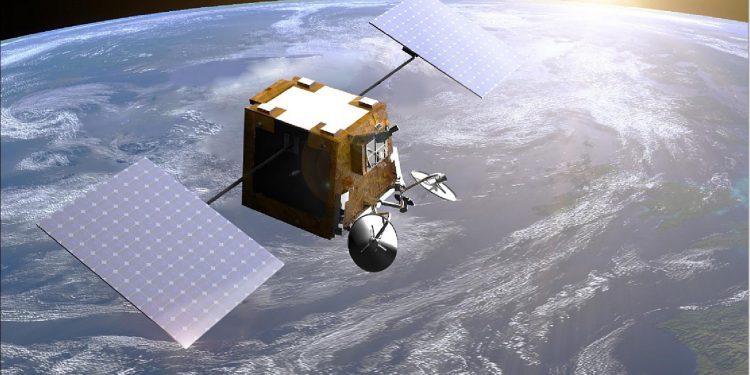Chennai: Europe’s satellite launch company Arianespace will be launching 36 OneWeb constellation satellites December 18, using medium lift Russian rocket Soyuz out of Vostochny Cosmodrome in Russia.
OneWeb, a low earth orbit (LEO) broadband satellite communications company, is a consortium between the UK government and Indian telecom group Bharti Global Ltd.
In November 2020 OneWeb announced that it has emerged from US Chapter 11 bankruptcy petition. A consortium of UK Government and Bharti Global, has invested $1bn of new equity to offer broadband connectivity services, via a constellation of 650 LEO satellites.
According to Arianespace, the 36 OneWeb satellites have been encapsulated in the payload fairing or heat shield of the rocket.
The December 18 mission will be the fourth for OneWeb. A total of 74 satellites were delivered by Arianespace into Low Earth Orbit for the connectivity constellation on two missions earlier this year and one in 2019.
“OneWeb’s goal is to bring connectivity to everywhere where fiber cannot reach, delivering high-speed, low-latency connectivity services to a wide range of customer sectors – including aviation, maritime, backhaul services, and for governments, emergency response services and more,” Arianespace said.
The Russian-built Soyuz will release its satellite passengers in nine deployment sequences during a mission lasting just under three hours, 52 minutes.
Total payload lift performance for Soyuz is set at 5,810 kg., which includes the spacecraft, their dispenser and integration hardware.
The Soyuz 2-1b launcher version utilized for Flight ST29 is the result of a joint European/Russian upgrade programme, adding a more powerful third stage engine that significantly increases the launcher’s overall performance, Arianespace added.
This mission’s Soyuz is equipped with a re-ignitable Fregat upper stage, which is routinely used on Arianespace missions to extend the launcher’s capability.
For the upcoming OneWeb deployment, the Fregat stage will perform multiple reignitions/propulsion burns while delivering the OneWeb satellites into a near polar orbit at an altitude of 450 kilometers. After completion, the upper stage is to make a final burn for deorbiting.
The spacecraft prime contractor for OneWeb’s constellation is OneWeb Satellites – a joint venture founded by OneWeb and Airbus Defence and Space.
A facility in Florida, US built the passengers for Flight ST29, with the capacity to complete two spacecraft a day on a series production line dedicated to the assembly, integration, and testing of OneWeb satellites.
Flight ST29 underscores Arianespace’s position as a leading provider of launch services for constellation satellites.
Since the late 1990s, it has launched a total of 205 such spacecraft.
In addition to the OneWeb satellites, this involved: 56 for Globalstar; 30 for Planet; 20 for O3b; 12 for Swarm Technologies; eight for Spire; along with one each for Orbcomm, Satellogic, Kepler Communications, Orbital Solutions/GeoOptics and GHGSat.
Additionally, 26 institutional satellites were launched for the European Space Agency (ESA) and the European Commission as part of the Galileo constellation project, Arianespace said.
In November 2020, OneWeb announced that it has emerged from US Chapter 11 bankruptcy petition. A consortium of UK Government and Bharti Global, has invested $1 billion of new equity to offer broadband connectivity services, via a constellation of 650 LEO satellites.
Interestingly a day prior to OneWeb’s constellation of satellites launch, Indian space agency ISRO (Indian Space Research Organisation) will be launching its communication satellite CMS-01, formerly named GSAT-12R, using its Polar Satellite Launch Vehicle (PSLV) rocket’s XL variant numbered as PSLV-C50.






































